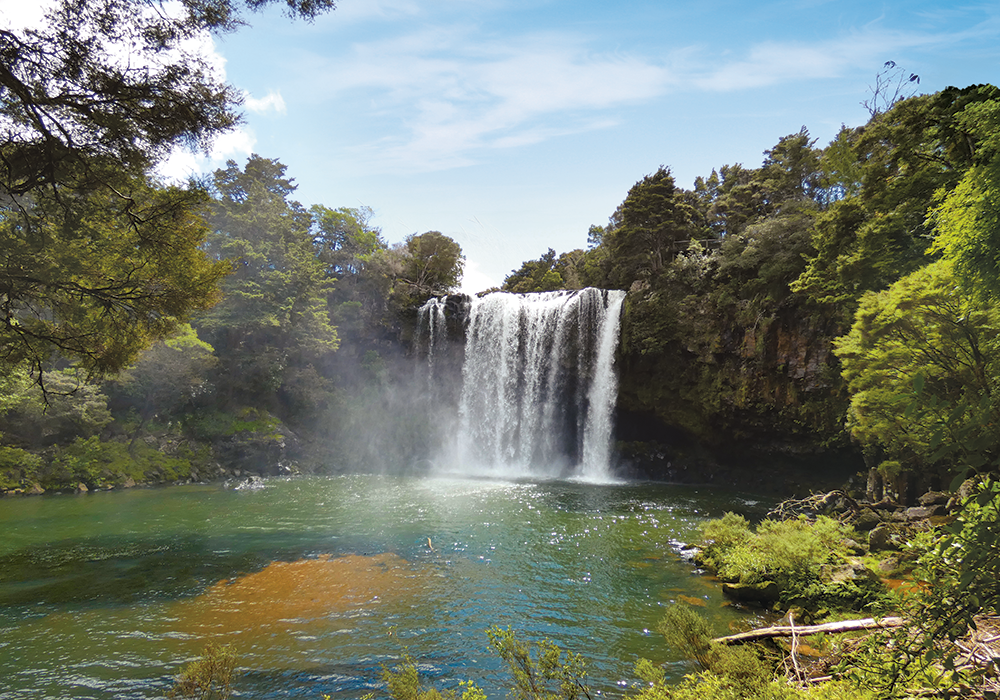Heather Whelan explores what Kerikeri has to offer on a short break.
Being in Northland with some fine days forecast around opens up a world of possibilities for travellers. This time, our destination was Kerikeri, the region’s largest town.
Kerikeri is 80km north of Whangārei — a great base for exploring the Bay of Islands. There’s no shortage of things to see and do in and around the area, so we decided to revisit some old favourites, and uncover some new finds. In this beautiful part of New Zealand there’s always something new to discover.
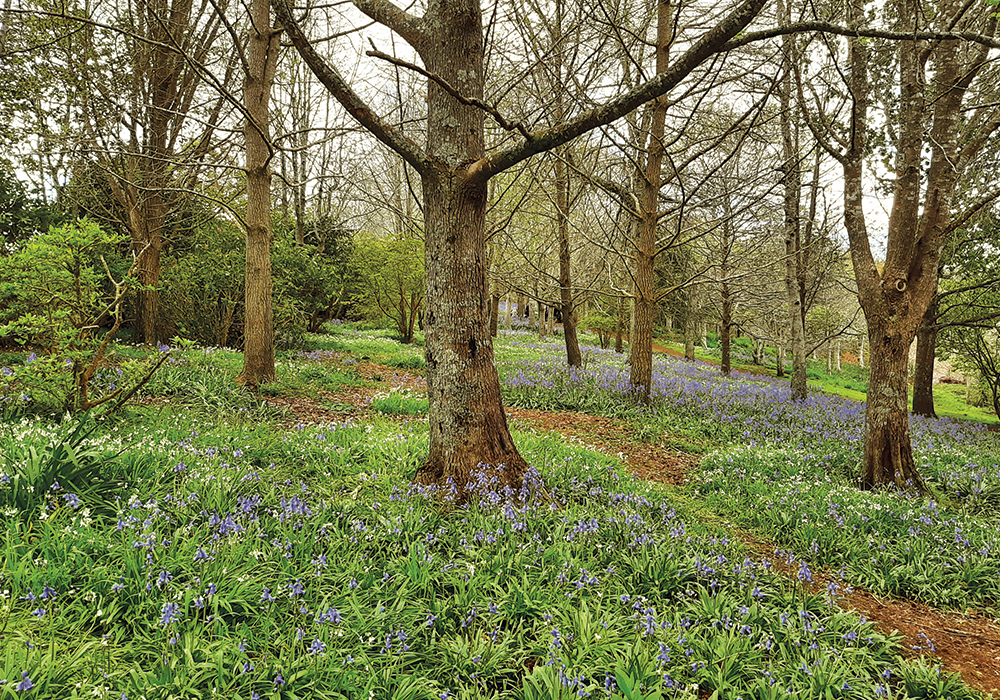
Roland’s Wood
Someone had told us about Roland’s Wood, famed for its springtime bluebells, so that was our first stop. The woods are on the outskirts of Kerikeri, about 3.5km from the town centre, along Kerikeri Inlet Road. Common in England, bluebell woods are rarer in New Zealand, but Roland Sansom was a man with a dream. After purchasing land from his uncle in 1985, Sansom worked on what had been a bare hillside, creating a wooded landscape of deciduous trees, mainly English beech, with masses of bluebells planted beneath them. Roland died in 2001, leaving ten acres of his woodland to the people of Kerikeri. Since his death, the wood has been cared for by a community group, Friends of Roland.
The swathes of blue really are a sight to behold and we couldn’t help taking lots of photos. The wood is obviously popular, and there were quite a few others enjoying the bluebells when we visited. A group of elderly folk were enjoying morning tea at a picnic bench, while a preschooler clasped a few blooms in her hand as she wandered among the flowers. After strolling through the woodland we realised there were paths leading downhill past banks of clivia, so we headed in that direction. As well as the bluebells, we found bursts of bright colour from rhododendrons, camellias and magnolias. There were cherry blossoms, freesias and daffodils; a utopia of fresh colour.

Rainbow Falls
Members of the NZMCA are lucky to have the park at Rainbow Falls on the north side of Kerikeri, across the bypass and along Waipapa Road. From here it’s a short drive or a one-hour walk through native bush to the Kerikeri Basin, now also known as Kororipo Heritage Park.
We opted for the walk, first stopping to admire the waterfall. Because of recent rain the river was in full flow and the resulting mists of spray created the rainbow effect that gives the Falls its name. Along the track – which follows the Kerikeri River – we admired the Fairy Pools, the Wharepuke Falls, some gnarly old puriri, tall tōtara and kauri, and checked out a historic hydro pumping station.
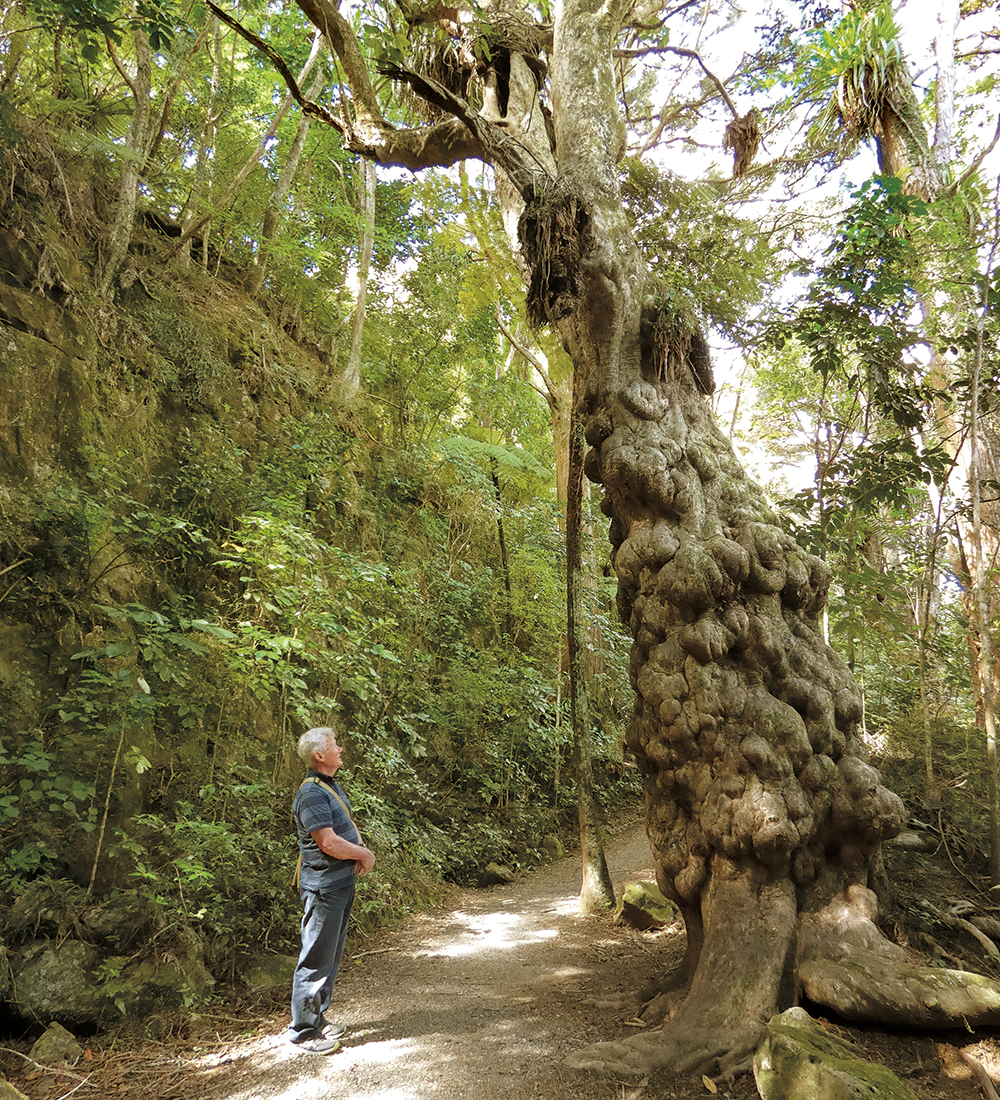
Kororipo Heritage Park
Where the river tumbles over rocks and enters the Kerikeri Inlet, there are a cluster of historic buildings and sites. New Zealand’s oldest building, Kemp Mission House, and the iconic Stone Store stand beneath St James Church and Kororipo Pā. The pā was the stronghold of Hongi Hika, the mission station’s protector.
Since the Kerikeri Basin was bypassed in 2008 and the road replaced by a footbridge, the area has become a calm oasis. We enjoyed coffee and cake in the Honey House Cafe, owned by Heritage New Zealand Pouhere Taonga. The cafe has views of Kemp House’s cottage garden, orchard and grapevines, and looks down onto the riverbanks where this season’s clutches of fluffy ducklings were charming onlookers. Past the wharf area you’ll find New Zealand’s oldest pear tree and a restaurant, the Plough and Feather. Tracks lead from here to Kororipo Pā, but we were bound for the other side of the basin.
Te Ahurea
Te Ahurea sits in one of the most significant historical sites in New Zealand for Māori and early European settlement. There has been a tourist attraction called Rewa’s Village on the north side of the Kerikeri Basin since the 1970s. Recently the land here has been returned to the Ngāti Rēhia iwi, and the rather tired and dated Rewa’s Village has made way for a new venture – Te Ahurea.
Beside the river we found a new canoe house, where a waka was being built. A path led up to a palisaded area with views across to heritage buildings and pā on the opposite side of the inlet. After paying for admittance we were given a short tour of the rooms that make up a small museum. There were artefacts here that have been found on Kororipo Pā and a taiaha (traditional Māori weapon) that had belonged to Tāreha, an important Ngāti Rēhia chief. Our guide told us that she was a descendant of Tāreha and lifted the taiaha down for us to examine.
Outside, we explored an area of reconstructed buildings, showing what a village would have been like in the time of Rewa, Hongi Hika and Tāreha, when the missionaries first arrived in 1814. There was a whare hui (meeting house) and several living quarters (whare noho). Down beside the river there was a waka tētē (fishing canoe) beside a new jetty. There are plans for waka tours soon; check the website (see ‘More Information’ box) for dates and times.

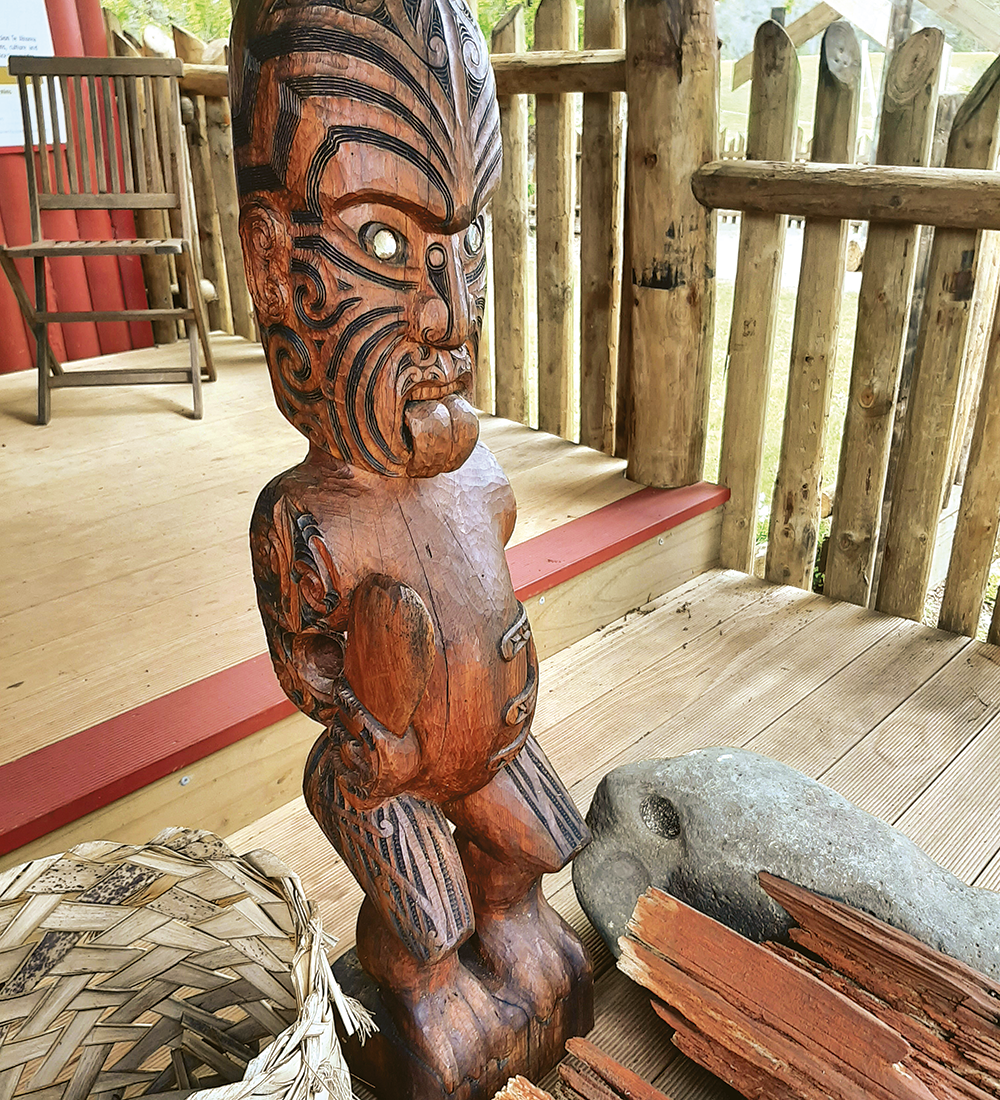

Gardens
According to the Te Ahurea website, the name Kerikeri means ‘digging associated with gardening’. An early alternative name, Kirikiri, means ‘river gravel’. This was brought from the river and used on kūmara gardens. Either name is appropriate for the area, as it is a town based on horticulture. At Te Ahurea the gardens have been extensively planted, and administered by the Department of Conservation. Paths wind through the gardens and there are many information signs explaining the plants used by Māori: as food, medicine, or for use in building, among other uses.
Wharepuke
Up the hill past St James’ Church, we discovered the Wharepuke Subtropical Garden and Sculpture Trail. These are gardens of national significance and, although new to us, they were established in 1992 by Robin Booth, whose family have owned the property since 1938. It was originally a citrus and kiwifruit orchard and is reputedly the first land in New Zealand to be ploughed.
In contrast to both the practical beauty of Māori gardens at Te Ahurea and the English-style bluebell woods, the Wharepuke Garden has a collection of rare and unusual subtropical plants and trees. We followed the sculpture trail through these dramatic plantings, where there were more than 40 works on display among the foliage and flowers.
We are no strangers to Kerikeri, but this trip showed there are always new discoveries, even if we know the area well.
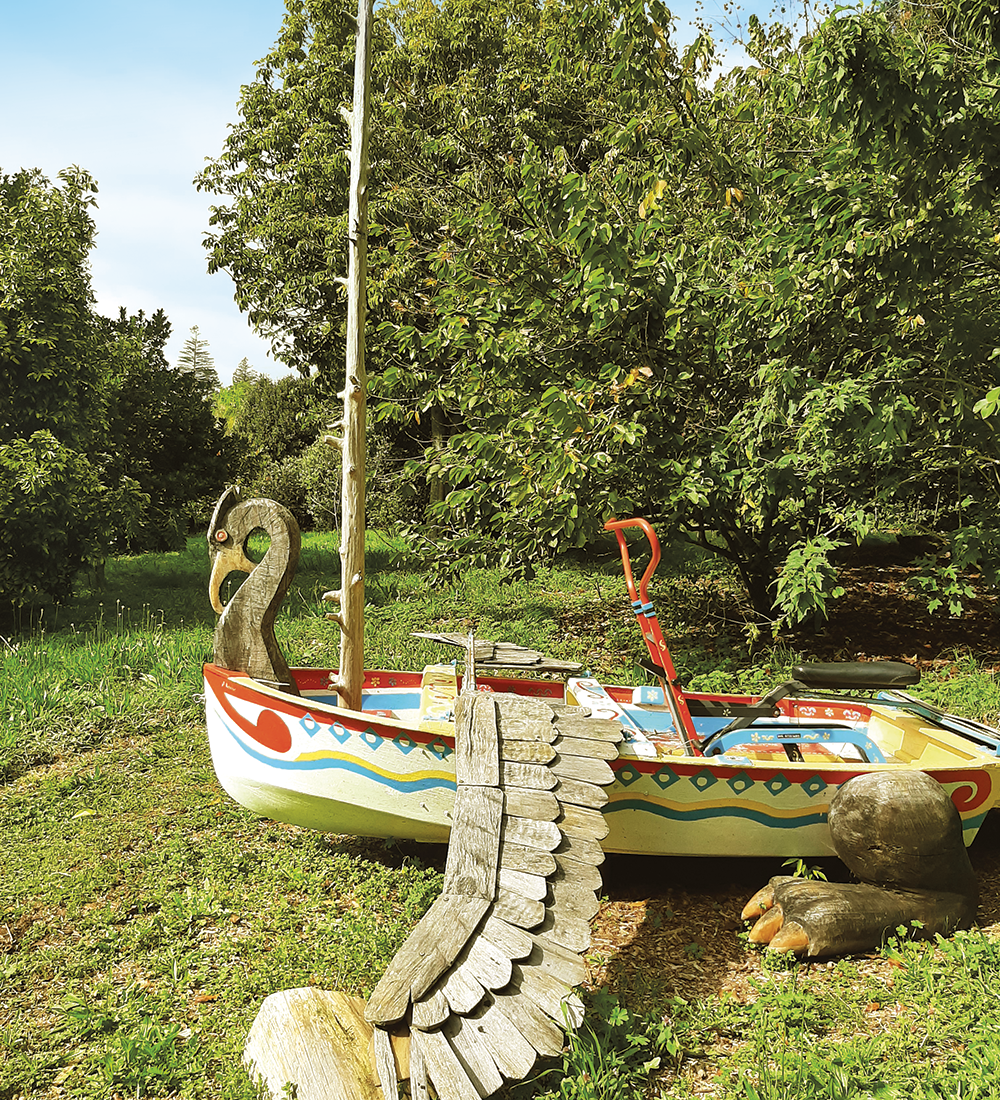
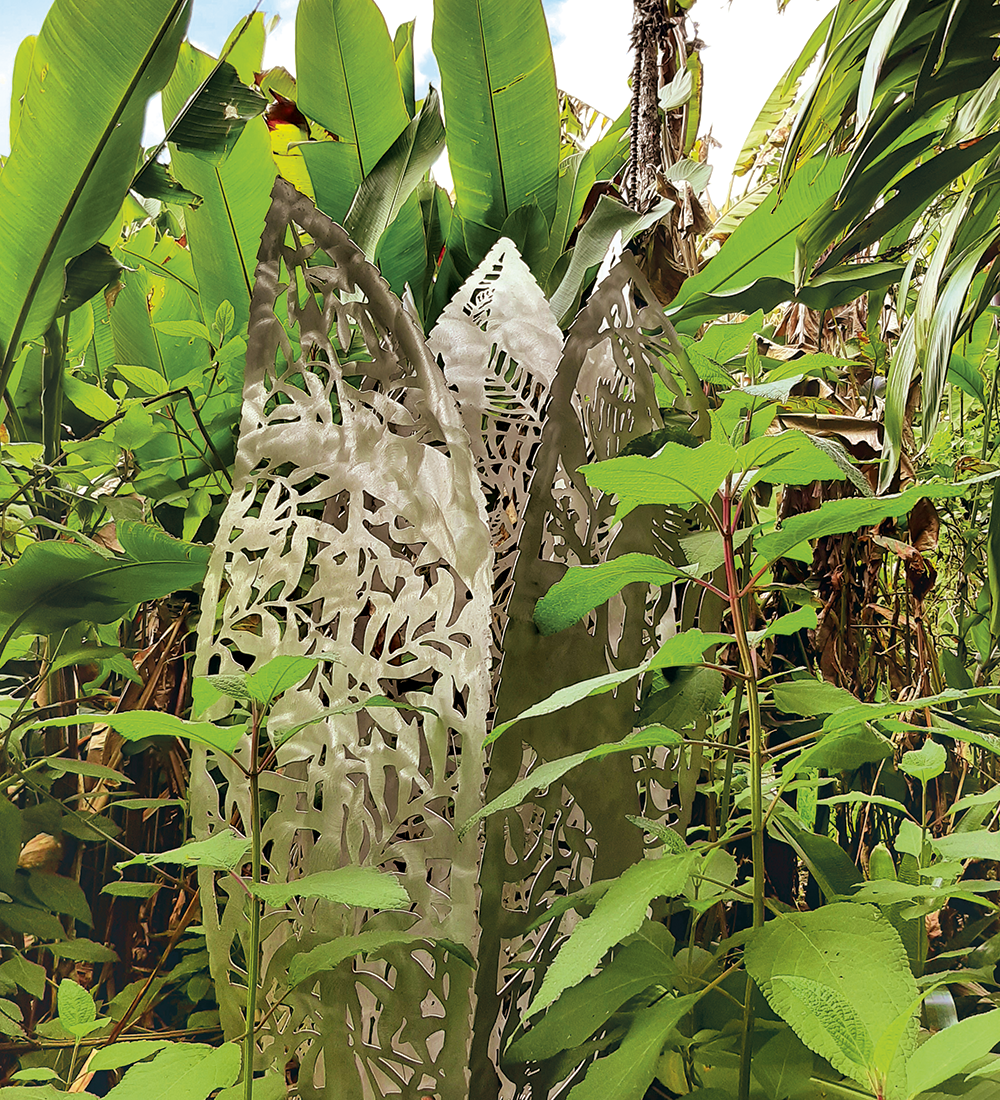
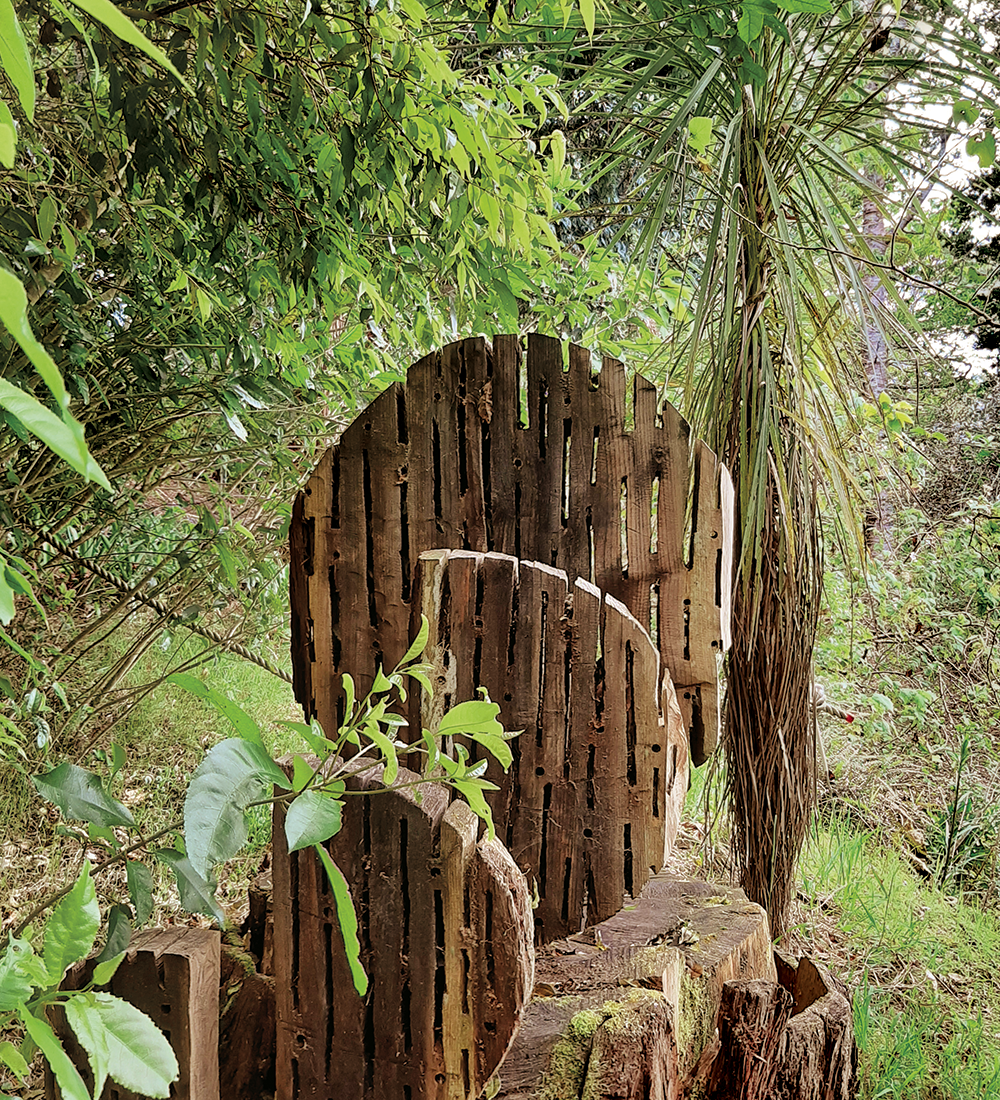
More Information
- For those who haven’t visited the Kerikeri Basin before, the Kemp House Mission Station and the Stone Store are well worth exploring. Full details at: heritage.org.nz; also at: Kororipo.co.nz
- Details about Te Ahurea can be found at: teahurea.co.nz
- There is parking available on both sides of the river at the Kerikeri Basin but larger motorhomes should take the bypass and park on the north side where there is more space available.
- Roland’s Wood is on Kerikeri Inlet Road, on the right hand side just after Blacks Road. There is a small parking area but there’s more parking on the roadside further along. Information about the wood: rolandswood.blogspot.com
- The NZMCA Park is on Rainbow Falls Road. There are several holiday parks in the area.
Looking for motorhomes or caravans for sale in NZ? Browse our latest listings here.

